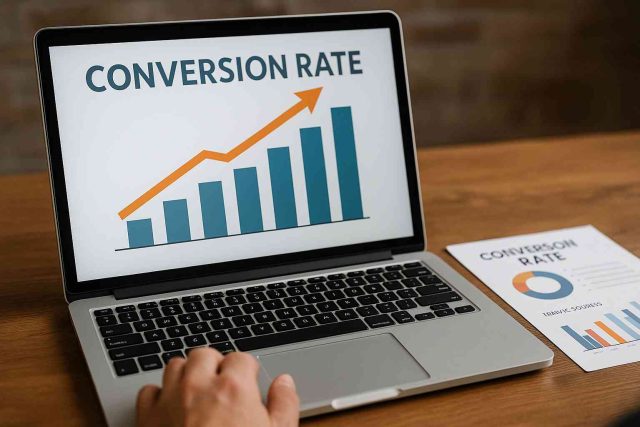In the fast-evolving world of digital marketing, certain practices rise and fall in perceived importance. One such strategy that has long dominated discussions is Conversion Rate Optimization. While it remains a useful tactic in many sectors, its influence in the pharmaceutical marketing landscape is no longer as vital as it once was. In a heavily regulated, highly personalized, and data-driven environment like pharma, focusing solely on conversion metrics may not capture the broader picture of success.
Table of Contents
- Shifting Pharma Marketing Goals
- Regulation and the Limitations of CRO
- The Rise of Omnichannel Engagement
- Data Privacy, Trust, and Education
- Conclusion
- FAQs
Shifting Pharma Marketing Goals
Pharma marketers today are navigating a vastly different landscape than they were even five years ago. In the past, Conversion Rate Optimization focused heavily on immediate digital actions—form fills, clicks, or eBook downloads. These metrics, while still tracked, no longer define campaign success on their own.
Today, brand-building, patient trust, and long-term engagement have emerged as primary objectives. Marketers now aim to foster deeper connections across channels rather than just boosting conversion stats. For example, instead of optimizing a landing page to squeeze out another 0.5% conversion, pharma marketers are crafting personalized content journeys that emphasize support and education.
Notably, pharma campaigns must operate within tight compliance boundaries. That restricts tactics commonly used in aggressive CRO strategies, such as pop-ups or urgent call-to-action banners.
Regulation and the Limitations of CRO
The pharmaceutical sector is one of the most regulated industries globally. The FDA, PhRMA, and other governing bodies place strict controls on how branded drug names and claims can be used online. Consequently, traditional Conversion Rate Optimization techniques—A/B testing ad copy, tweaking headline structures, and reordering CTAs—must pass legal scrutiny.
Unlike retail or SaaS where marketers have the freedom to test dozens of ad variations rapidly, pharma teams face extended approval cycles. These cycles not only delay changes but can dilute the agility CRO requires to be effective.
Furthermore, healthcare providers (HCPs) and patients often look for in-depth information, scientific validation, and peer-reviewed content. These expectations shift focus from short-term conversion to long-term value and educational authority.
For insight on adapting digital strategies under compliance, see Pharma Marketing Featured Articles.
The Rise of Omnichannel Engagement
One of the most compelling reasons for the decline of traditional Conversion Rate Optimization in pharma is the emergence of omnichannel engagement strategies. No longer are campaigns siloed to a website or email. Instead, HCPs and patients interact across touchpoints such as webinars, social media, e-detailing, and patient portals.
For pharma marketers, this means building relationships rather than pushing for immediate action. Every touchpoint now serves as a step in a comprehensive content journey, where the emphasis lies on consistency, trust, and value over quick conversions.
Additionally, platforms like eHealthcare Solutions offer integrated solutions for pharma advertisers to measure true engagement rather than one-dimensional conversion rates. Metrics like time on site, content interaction, and return visits often provide a clearer picture of campaign success.
Data Privacy, Trust, and Education
Patient-centricity is at the heart of modern pharma marketing. As a result, marketers are shifting their focus from conversion rates to metrics that prioritize patient empowerment. Education, transparency, and authenticity have become essential ingredients of any digital campaign.
In this context, pushing for conversions may not only be ineffective but counterproductive. Patients are increasingly wary of sharing personal data online, and healthcare professionals expect content that is accurate, balanced, and beneficial.
Data privacy regulations such as HIPAA and GDPR further restrict what information can be collected and how it’s used. Therefore, measuring engagement through qualitative interactions—like article reads, video completions, and webinar participation—is often more aligned with campaign goals than pure CRO.
To build long-term trust, marketers must prioritize value-driven content. Platforms like Healthcare.pro help patients and providers navigate complex medical information safely and reliably.
Educational Content as a Trust Builder
Articles, infographics, and explainer videos serve dual purposes: they inform and build brand credibility. Instead of asking, “How can we get more sign-ups?” pharma marketers are now asking, “How can we educate better?”
This subtle shift reduces reliance on traditional CRO and opens opportunities for more meaningful connections with both HCPs and patients.
Conclusion
In the context of pharma, Conversion Rate Optimization is not dead—but it no longer reigns supreme. The industry’s priorities have changed, embracing holistic engagement, educational content, and regulatory compliance over simple metrics.
Today’s marketers must think beyond clicks and downloads. Building trust, offering valuable information, and nurturing long-term relationships have become the new benchmarks of success.
By modernizing metrics and leveraging platforms tailored to healthcare, pharma brands can stay effective and relevant in this changing digital environment.
FAQs
Is Conversion Rate Optimization still relevant in pharma?
Yes, but its role has shifted from being a central strategy to one of many supporting tactics within a larger, patient-centric marketing framework.
Why has CRO declined in importance?
The rise of omnichannel strategies, data privacy concerns, and evolving patient expectations have made engagement metrics more valuable than short-term conversions.
What metrics matter more than conversion rates?
Time on page, content engagement, repeat visits, and educational value are now seen as stronger indicators of campaign success.
Can CRO techniques still be used under FDA compliance?
Yes, but modifications must pass rigorous approval processes, which slows down testing and optimization.
What is the future of pharma digital marketing?
The future lies in personalized, multi-channel content journeys that prioritize trust, education, and compliance over simple conversions.
Disclaimer
“This content is not medical advice. For any health issues, always consult a healthcare professional. In an emergency, call 911 or your local emergency services.”
